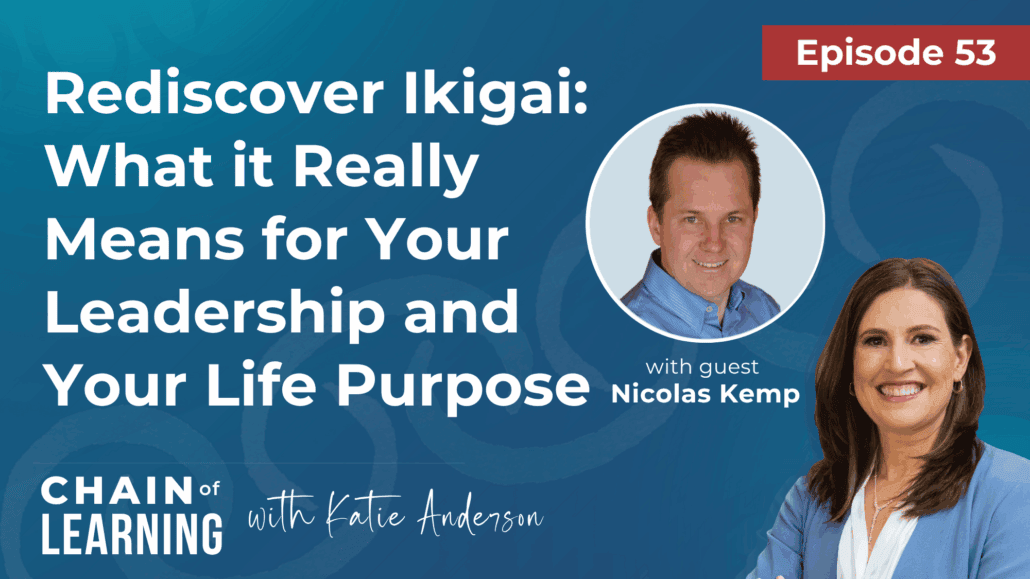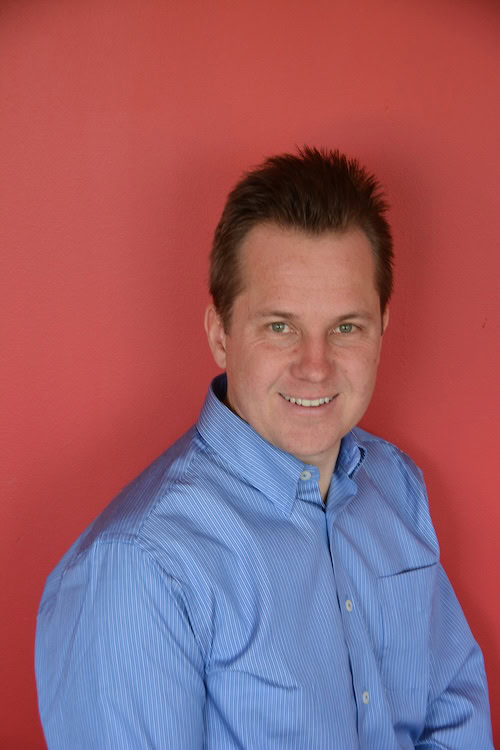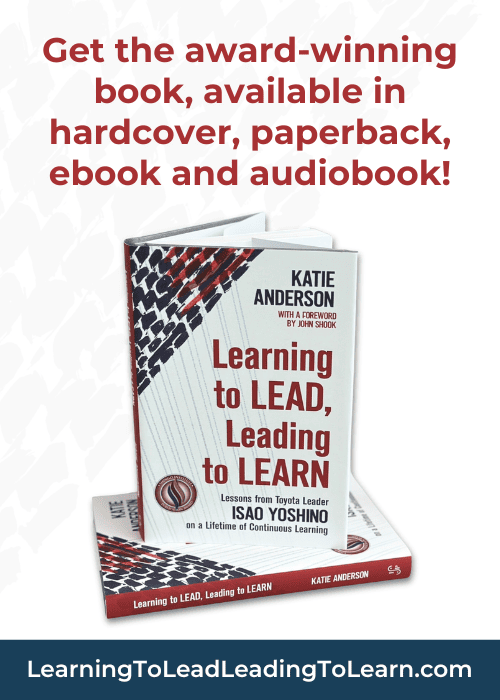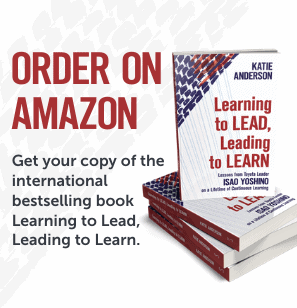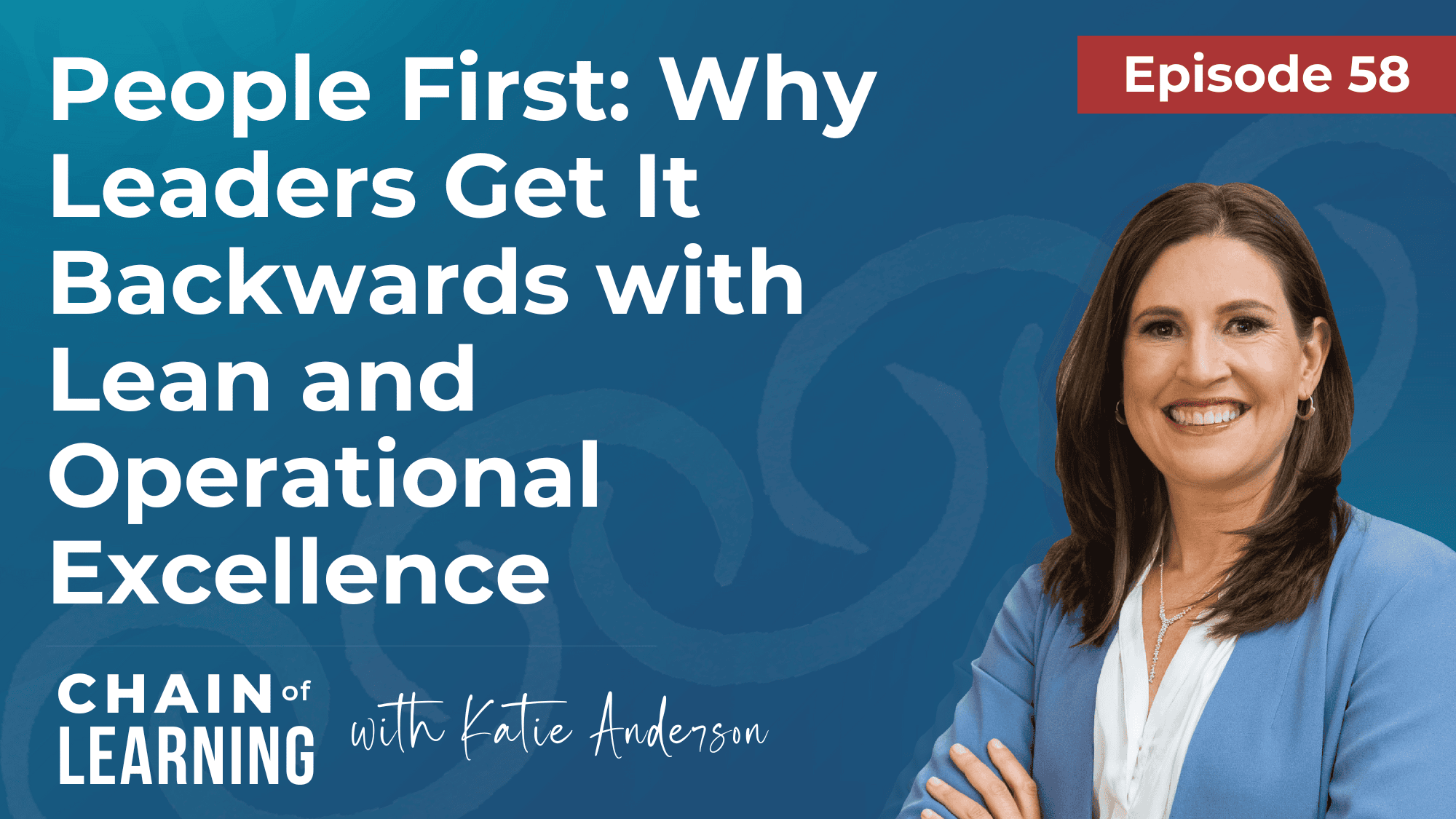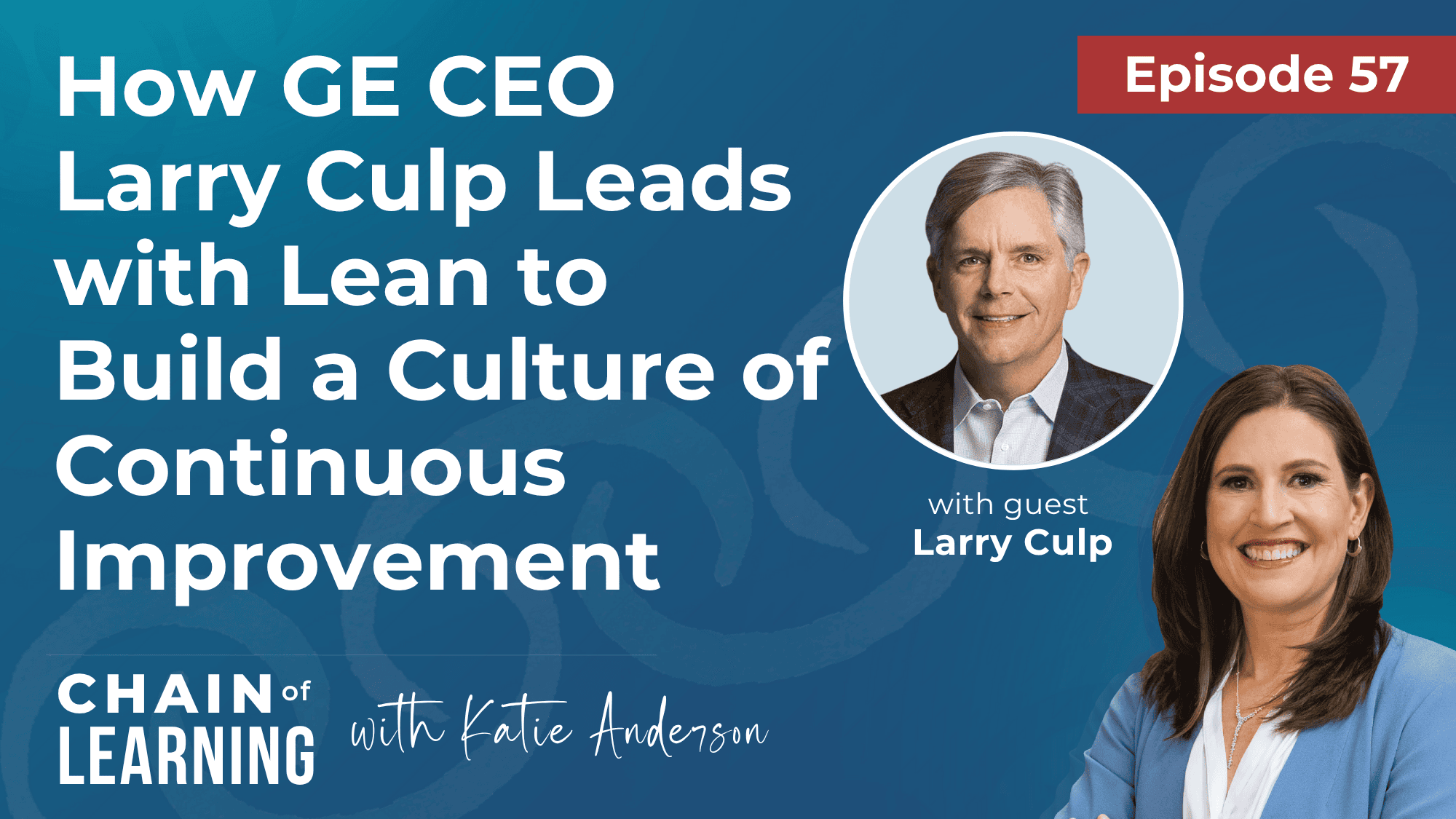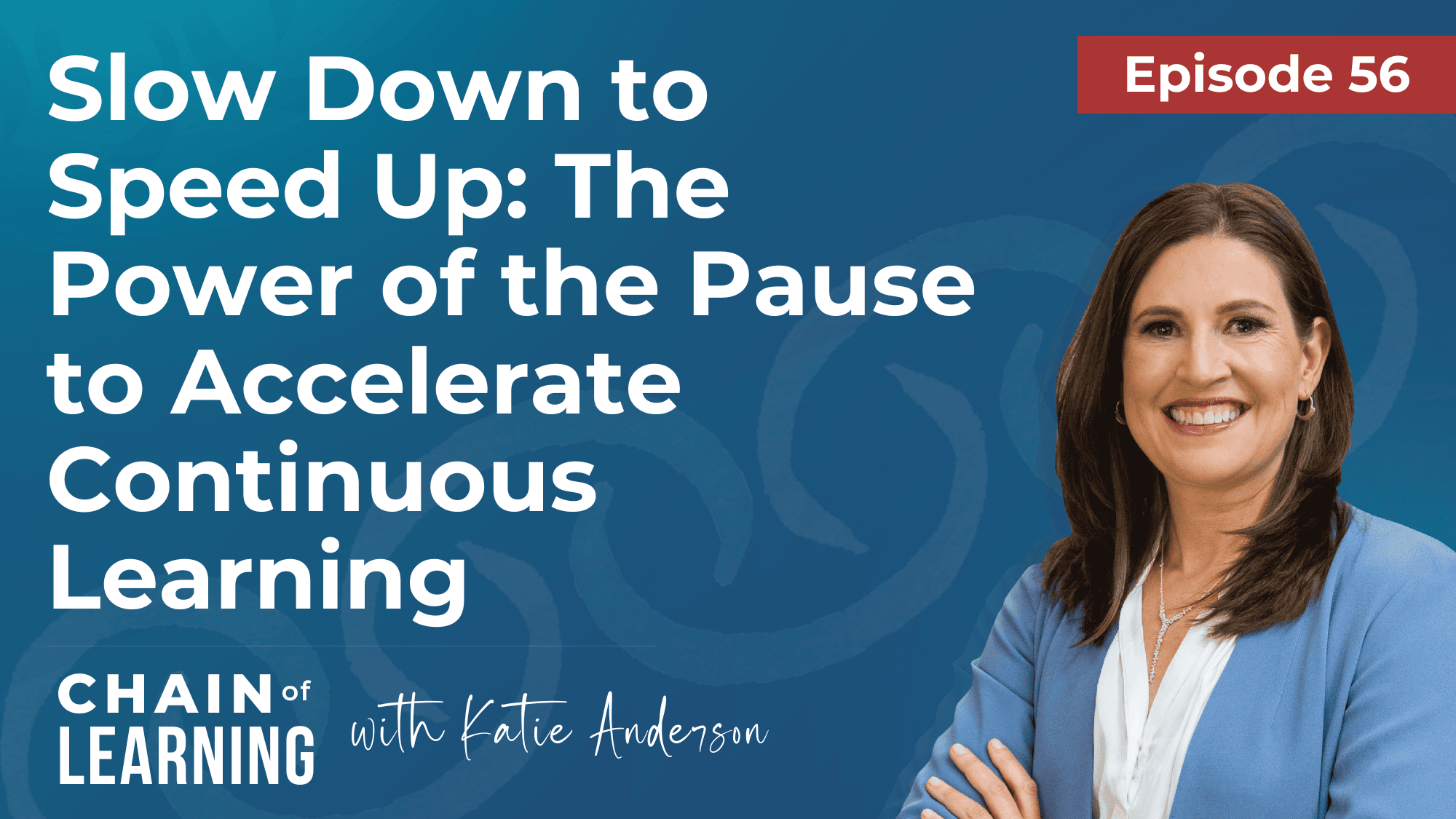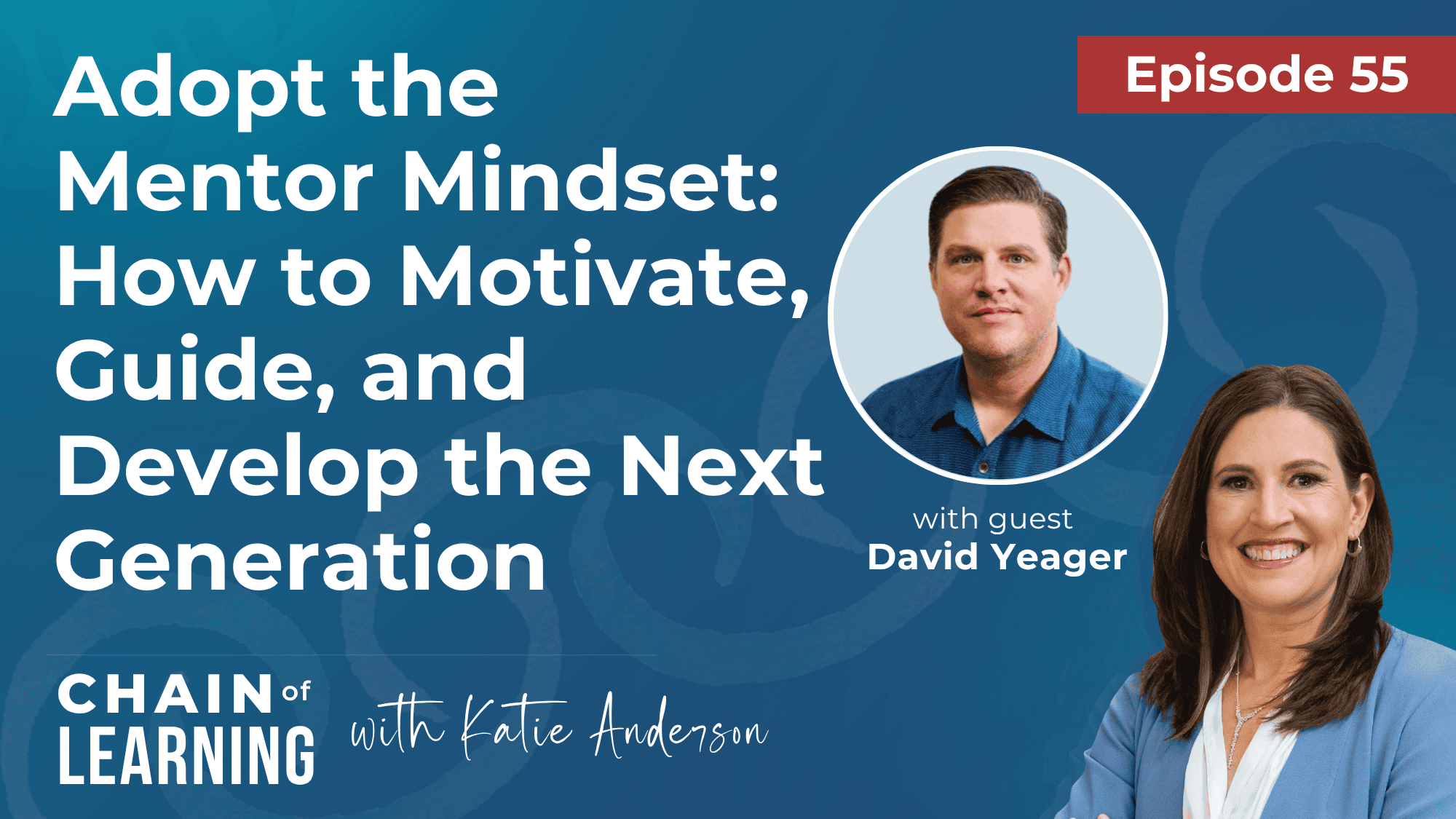Why the Ikigai Venn Diagram Misses the Point—and What Truly Matters
Ikigai is one of the hottest buzzwords in leadership and personal development.
When you think of ikigai, what do you envision?
Is it the popular Venn diagram that claims to help you find your purpose by identifying “the sweet spot” where what you love, what you’re good at, what the world needs, and what you can be paid for overlap?
The problem? That’s not ikigai at all.
And in fact, the very process of putting ikigai into a framework contradicts the authentic meaning of the word.
To dispel what he calls the “ikigai hoax” and uncover its deeper meaning I’m joined by Nicholas Kemp—Japanologist, researcher and author of IKIGAI-KAN: Feel a Life Worth Living and the new book Rolefulness: A Guide to Purposeful Living, co-authored with Professor Daiki Kato.
We explore how ikigai is fundamentally about creating meaning, connection, and a life —and workplace—where people feel life is worth living
It’s about being before doing and cultivating simple joys, authentic relationships, and spaces where people feel safe, valued, and inspired, whatever roles you are playing in your life or at work.
In this episode, you’ll learn:
✅ Why the popular Venn diagram version of ikigai is a myth—and what authentic ikigai really means in Japan
✅ Why ikigai is an essential concept for leaders who want to create people-centered workplaces
✅ The deeper meaning of kokorozashi and its connection to purpose, intention, and leadership impact
✅ What “rolefulness” means and why understanding your roles in life can bring meaning into your relationships and workplace
✅ Practical ways to apply ikigai in leadership and daily life to inspire individuals and build thriving teams
Listen Now to Chain of Learning!
Tune in to rediscover ikigai—not as a trendy framework, but as a powerful principle to understanding personal purpose, leadership development, and how to cultivate organizations where every individual can thrive.
Watch the Episode
Watch the full conversation between me and Nicolas Kemp on YouTube.

 About Nicolas Kemp
About Nicolas Kemp
Nicholas Kemp, known as The Ikigai Coach, is a coach trainer, public speaker, consultant, and author of IKIGAI-KAN: Feel a Life Worth Living and Rolefulness.
He is the founder and head coach of Ikigai Tribe, a community of educators, psychologists, coaches, and trainers dedicated to serving their communities through the authentic practice of Ikigai.
With decades of experience living in Japan and training leaders worldwide, Nick is the trusted voice on how Ikigai can be embodied—not just studied.
Nick and I actually I met in person in Nagoya before one of my Japan Leadership Experiences when he happened to be visiting from Australia too. See the photo below of our in-person met up captured in November 2024. 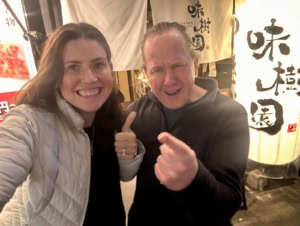
IKIGAI-KAN: Feel a Life Worth Living and Rolefulness: A Guide to Purposeful Living
Nicolas Kemp generously donated his books, IKIGAI-KAN: Feel a Life Worth Living AND his new book Rolefulness: A Guide to Purposeful Living, for 3 lucky listeners of the Chain of Learning Podcast!
If you’ve listened to this episode about Ikigai, you know how important it is to move beyond buzzwords and discover the authentic meaning of Ikigai in leadership and life.
IKIGAI-KAN: Feel a Life Worth Living clears up the myths and misconceptions of Ikigai, offering an evidence-based, culturally grounded perspective on what it truly means to live a life worth living.
Rolefulness: A Guide to Purposeful Living invites you to find purpose not by chasing a single calling, but by embracing meaning in the everyday roles you already live—parent, friend, leader, colleague, or creator.
Both books connect deeply with the themes of our episode: being before doing, aligning with purpose, and creating spaces where people feel valued and inspired.
This giveaway is now closed but if you would like to be the first to know about upcoming book giveaways—please join my newsletter here.
Reflect and Take Action
At the heart of ikigai, kokorozashi, and shiko is one core truth: leadership isn’t about tools or frameworks—it’s about aligning with purpose.
✨ Ikigai – your personal sense of meaning, what makes your life worth living
✨ Kokorozashi – your purpose for others, a commitment to making a difference
✨ Shikō – your intention in action, aligning daily behaviors with your deeper purpose
These concepts remind us that real leadership is about cultivating meaning through simple joys, authentic relationships, and creating spaces where people feel safe, valued, and inspired.
Here are some everyday practices to try this week:
- Greet others with intention
- Create space for meaningful conversations
- Express gratitude in small, genuine ways
These small steps can help you and your team create ibasho—welcoming places where people thrive.
Where are you finding your own sense of ikigai right now and how are you bringing that purpose forward to serve others through your daily actions?
Important Links:
- Check out my website for resources and ways to work with me
- Connect with Nicolas Kemp
- Follow me on LinkedIn
- Check out Nicolas Kemp’s Ikigai Tribe website and get his books
- Download my free KATALYST™ Change Leader Self-Assessment
- Learn more about my Japan Leadership Experience
- Episode 36 | What’s Your Purpose: Weaving Warp and Weft with Intention and Finding Your Kokorozashi
- Ikigai Podcast: Learning Through Leadership with Katie Anderson on the Ikigai Podcast
- Ikigai Tribe Article: Katie Anderson’s Insights on Leadership Through Continuous Learning
Listen and Subscribe Now to Chain of Learning
Listen now on your favorite podcast players such as Apple Podcasts, Spotify, and Audible. You can also listen to the audio of this episode on YouTube.
Timestamps:
02:20 – What ikigai really means
03:11 – The misconception people think ikigai is
04:10 - The ikigai hoax of the popular viral Venn diagram
07:04 – Why Nick calls himself a Japanologist and his deep understanding of Japanese principles
10:57 – The different structures of ikigai to identify relationships, people roles, and hobbies
11:19 – What “Kan” means in Ikigai-Kan that makes you feel that life is worth living
13:27 – The concept of slowing down into “be” not just “do”
14:35 – How to get back to the ikigai essence of life and work
15:00 – The meaning of ibasho and that is built on three ideas that make you feel comfortable and have a sense of purpose
17:34 – The importance of having a psychologically safe environment where continuous improvement thrives
19:54 – What kokorozashi means to align our behaviors with intention
21:20 – How Japan uses kokorozashi in their biggest business school
24:01 – Breaking down the concept of kokorozashi to put ideas into action
25:38 – What inspired Rolefullness to make it an extension of ikigai
29:03 – Tips on how to understand your role in your own life whether at work or home
23:23 – Three ways to enrich your life
30:22 – The importance of meaningful conversations and expressing gratitude
32:26 – How to be more roleful to make a change in your business and relationships and fulfill a specific role
36:07 – The concept of authenticity to show up as you are with maximum impact
36:58 – How to get started in getting more intentional in being your authentic self
38:12 – The greatest gift of ikigai and allowing a person to pursue their work role
42:12 – Cultivating ikigai, kokorozashi, and shiko to create space where people feel safe, valued, and inspired
43:24 – Three simple ways to create ibasho to build a welcome place where people thrive
Full Episode Transcript
Nick: [00:00:00] I started to wonder, I wonder how many employees, if you went and asked them and said, you know, do you feel physically, psychologically safe at work where you have a strong sense of purpose? Do you have reliable relationships? Are your managers approachable? Is your boss approachable? And do you see a future there?
I wonder how many employees would say yes to all three. I sort of had the impression that it definitely wouldn’t be yes to all three.
Katie: Welcome to Chain of Learning for the Links of Leadership and Learning Unite. This is your connection for actionable strategies and practices to empower you. To build a people-centered learning culture, get results, and expand your impact so that you and your team can leave a lasting legacy.
I’m your host and fellow learning enthusiast, Katie Anderson. Ikigai has become one of the hottest concepts in leadership and personal development, but here’s the catch. What most of us in the West think of as ikigai, that viral Venn diagram [00:01:00] isn’t actually the essence of ikigai at all. At its core. It’s about meaning.
Connection and creating a life and workplaces where people truly feel life is worth living. To help us unpack the real meaning of ikigai, I’m joined by Nicholas Kemp. Japanologist. Researcher, podcaster, and author of “IKIGAI-KAN Feel a Life worth Living”. And the new book “Rolefulness” co-authored was Professor Daiki Kato.
Nick is the founder and head coach of ikigai Tribe. A global community of educators, psychologists, and coaches dedicated to bringing the authentic Japanese perspective of ikigai to leadership in life. With decades of experience living in Japan and training leaders worldwide, Nick has become a trusted voice on how ikigai can be embodied, not just studied.
I’m thrilled to welcome Nick to Chain of Learning, to explore not just what ikigai really means, but how we can apply it in our own roles in organizations. We started [00:02:00] off our conversation with a question, what is ikigai and why is it so often misunderstood? Let’s dive in.
Nick: This is both an easy and challenging question.
So an easy way to answer this question is to simply ask the question, what makes your life feel worth living? What matters to you? What’s important to you, but also who’s important to you? What do you wanna be doing? And if you can answer all those questions, you’ve uncovered all these ikigai, the more complex response could be.
Well, it’s relatable to positive psychology, existential positive psychology, philosophy. Um, it’s something we can teach, learn, yet. Ironically, for most Japanese, it’s something they don’t even talk about. Most Japanese wouldn’t even know. It’s a, a topic of research. If you go on to ResearchGate, you’ll find hundreds of papers on ikigai relating it to robot [00:03:00] design, to positive psychology, to solving problems such as, uh, depression.
So that’s the complex side. So it is an area of research. And then I guess the misconception is people think it’s. This one big thing to achieve. Whereas in Japan, it’s often this accumulation of smaller joys, or as Ken Mogi would say, who’s a neuroscientist and author, I guess a celebrity neuroscientist in Japan.
He says it’s a spectrum of all these things in your life, whether they’re small joys to life defining goals, then make up your Ikigai.
Katie: Thank you for that description, and I love how you frame up ikigai, and yet there’s so many misconceptions out there. I’ve heard you use the phrase ikigai hoax. So tell us about what is the hoax that’s out there and the, the misconception that keeps getting perpetuated on LinkedIn and, uh, in so many places.
Nick: Well, I’ve gotta thank my son for that because [00:04:00] he, he came up with that term. Oh, dad, it’s, it’s the ikigai Hoax because he’s starting to edit my podcasts. I was like, oh yeah, I’m gonna use that. So, so I should thank him. So the hoax is this idea, it’s this sweet spot of that very popular viral Venn diagram of doing something that you love, that you’re good at, that the world needs and that you can be paid for.
Now that’s in inspiring. It’s obviously changed lives and it’s very, um, helpful. It’s very seductive. It’s simply not akii. So it’s, it’s not Japanese in origin. I think that Venn diagrams being this accumulation or, um, is it iterations, reiterations of or someone’s idea. I think it was a hedgehog concepts and it’s just evolved.
Um, and then someone who. Uh, won’t mind me, um, sharing his name. Mark Quinn, who I interviewed, [00:05:00] playfully merged ikigai with the Venn diagram, removing purpose from the center after he watched a TED Talk and then it went viral. And people love it. I love sharing it. Uh, I dunno why, like, why have, why have we fallen for this?
Why do, why do we love this? Why do we love these Japanese words? And I think if you know anything about Japan and you, you stop and thought. You would realize, well, hang on. Japanese don’t generally define things like they, they struggle to define things because they know there’s always more to an idea or or concept and they certainly wouldn’t be talking about money.
Yeah, it’s, yeah. It’s really interesting how I think it went viral as the purpose Venn diagram to some degree, but when you put Iki go in the center, it just blew up and people are posting it on LinkedIn, as you know, every day. My son calls me the ikigai police.
Katie: Well, I love that you get back to the essence of it, and I, I think [00:06:00] you know, there, that’s great that it’s inspired the, the Venn diagram is inspiring people to think about purpose and what their purpose is, and that meaning, but it’s such a Western approach, isn’t it?
To like wanna put like a strong framework on it or make it a tool and like define that this is how it is. Whereas in my experience also, you know. Living and working in Japan, it’s, it, things are a little more ephemeral. It’s a little bit more of a, as a feeling, a way of being. And you know, I think about this, you and I talked about on your podcast as well, like the, the way that the, the essence of kaizen of continuous improvement has been tried to be brought over to the West versus its essence in, in Japan, which is about, you know, looking at small ways to make improvements each and every day starting with ourselves.
But like, it’s become like an event or a specific thing you do. And we, we just tend to toolize, that’s not a, that’s not a word, but like toolize and framework it and just make it something more rigid rather than the essence. And I feel like that that essence sometimes is, is lost. I’d [00:07:00] love for you to share, uh, Nick too, how you came to know so much about ikigai.
You call yourself a Japanologist and a little bit more of your background. That to. Share your enriched, real deep understanding of these principles as well.
Nick: Yeah, I’m, I’m probably an armchair Japanologist to be fair, but, so it all started in 1998 and I was in Japan. Teaching i’d, I’d been in Japan before in 95. I’d, I’d done a one year, uh, traineeship as a trainee chef and I’d, I came back to Japan to teach and I remember the first day on my job, young and ambitious, trying to show off my Japanese.
I was talking to a Japanese coworker and we we’re walking over to a cafe for lunch. She casually asked this question like, oh, Nick, what’s your ikigai? I thought, like, ikigai. What’s that? And she gave me this very inspiring explanation and I’m like, what? You have one word to [00:08:00] articulate all that? And I, I couldn’t believe it.
And I remember going back to the teacher’s classroom and saying, Hey, do you know this word ikigai into the foreign, uh, teachers? And they didn’t know. And I thought, what an inspiring word. I remember going into work the next day thinking, I’ve gotta ask this coworker about this word, and she’d been transferred and I remember this.
I can still taste the disappointment. Like, oh no, I can’t ask her more about this amazing word. And then life moved on and I didn’t really hear ikigai ever asked or spoken to me after that. And then 20 years later, I saw the Venn diagram. And I thought I remember that word, but I don’t remember it being presented to me like that, and that can’t be it, and kind of brushed it off.
Then I, I kept on seeing it. Then a, a bestselling book came out on it and I just started to realize, well, everything about Ikigai. From the Venn [00:09:00] diagram to the word being from Okinawa to the word being the secret to a long and happy life is either just completely factually wrong or romanticized. And it started to eat at me.
And you know, the inner voice was saying, oh, you know. You should do something about this. And I’m like, well, I don’t know what it is like. And then, yeah, it took me about a year, but I thought, okay, I’ll do something about it. And then I saw it on the World Health Organization website as the Venn diagram, and that was sort of the final trigger.
And I thought that’s it. I’m going to do a podcast. I will interview Japanese academics, researchers who can speak English. On this concept, and I remember literally overnight I went from not having a website to getting a domain, quickly building a website, mocking up the front page, then. [00:10:00] Reaching out to Professor Hassal, who was the first guest on my podcast.
And then that’s when the learning, the Chain of Learning started to form.
Katie: Yeah. And then codified in your book, uh, “IKIGAI-KAN,” which I loved reading, and I still love going back to it for, for listeners, uh, wanting to know more about the real essence. Of ikigai. Nick does an incredible job talking about the, the real meaning and, and how you can bring it forward into your life, and how we can really think about purpose and the things that light us up.
And it doesn’t have to be a set, I guess, a formalized set way. Maybe, maybe your ikigai now is to, uh, dispel the myth of, and and bring it forward in, in the world. You’re of the Venn diagram at least. ’cause
Nick: Oh, it’s, it’s, it’s, it’s interesting because the Venn diagram does lead to people finding me. It’s actually helped my business.
So in a way, I am, I’ve gotta be grateful for the Venn diagram. But if we do wanna structure on what ikigai is, [00:11:00] there is ikigai and there’s Ikigai Kan, and that’s why title to book “IKIGAI-KAN”. So ikigai refers to ikigai Tai Shaw or ikigai objects. So these are things we can identify. Relationships, people roles, hobbies.
Small joys. And then the Kan is the awareness, sense or feeling. So ikigai is something you ultimately feel. It’s a experience, a sensation, and it makes you feel that life is worth living. So that’s why I titled the book “IKIGAI-KAN” sort of highlight.
Katie: I love, I love that connection and this word I, I’ve seen the word meaningful throughout, you know, the book and you’ve talked about it too.
And I’veI keep coming back to this word meaningfulness, uh, on this podcast too, about what we’ve tried to do with translating the toy to production system, the toyed away what’s oftenly referred as lean. We’ve missed the meaningful connection, and I really feel like the ikigai is that [00:12:00] essence, that meaningfulness of what we’re doing.
It’s not just like. Applying tools and improving processes, but it’s about creating in a meaningful experience and helping people feel connected to their work. And I, I think I go, I think about all the companies and I visit in Japan and I take people on my Japan leadership experience this, this sense of ikigai of creating, uh.
A space where people feel that life is worth living. That’s like the foundation, the essence of it, and then the rest follows and we just, I feel like we miss that so much. Um, in the West
Nick: we’re always focused on the big goal or dream, and we do miss the meaning of the seemingly small, but that’s kind of what matters.
At the end of the day, it’s. You go home, it’s the, if you’ve got a dog, it’s the tailwind of your dog. Or if it’s a cat, it’s, it’s their per, or it’s the hug or it’s the laughter of your children. It’s all these small things that we live for, but we seem to put ourselves through hell to achieve a certain goal.
And then [00:13:00] once we get there, it’s either never as much as we hoped or it doesn’t last. So yeah, Japanese seem to understand. And they’re, they’re more grateful of the small
Katie: Hmm.
Nick: And it is meaning making. It’s like, what does this mean to me? Why does this matter like that? That could be a key question. Like, why am I doing this?
Why does this matter? And not be always forward focused?
Katie: Hmm. Yes. That concept of like slowing down into be Not just do, and I think that was one of the topics of my very first podcast episodes, maybe episode four, like being versus doing. We’re in such a do, do, do culture that we don’t focus on that, that, that being or we forget about it.
We’re so caught up in the doing. But it’s that essence probably really that gives life meaning. That is the true icky ikigai for us. Uh, one of the things I’ve, I do so much with, uh, with leaders at all levels is helping them get, you know, I haven’t used the word ikigai per se, but we talk about getting back to what’s your purpose and what are the things [00:14:00] that are most important to you?
And, uh, there’s so many different ways you can explore that through drawing, through conversations, through journaling. But what I ask leaders to share what that is, it always comes back to those, those true things. Like it’s about community, it’s about family, it’s about helping others. It’s about something that lights them up.
It’s about. Something, it brings them joy, but it’s all about human humanity and human connection and like, and so like help say, okay, well what are those? Okay, so how is that getting lost in the workplace? Right? How can we get back to that essence of purpose? ’cause yeah, sometimes it, we get, we kind of get disconnected from that.
I think
Nick: we do. We, we definitely do.
Katie: Yeah. What are you, what do you experience in the people you work with, with Iki? Like getting back to the, the, the ikigai essence of
Nick: life and work? I definitely think we should be tying ikigai to a social world. Whether that’s professionally or personally. And I do have this belief that every workplace should be an, which is a sub theory of ikigai.
So there, there’s papers on this concept. [00:15:00] So ibasho is almost like ikigai. It’s was a common word. To mean, uh, whereabouts. And then as Japan started to have problems with, um, children skipping school and people staying at home, like social withdrawal with k, uh, ibasho became a solution or the word for that solution.
And ibasho is this place to be. Literally means a place to be. And so every workplace should be a place to be. And it’s, it’s built on three ideas that you feel comfortable or safe and you have a sense of purpose, that you have reliable social relationships and that you have a reason to keep coming back.
You have this future there. And I started to wonder, I wonder how many employees, if you went and. You know, do you feel physically, psychologically safe at work where you have a, a strong sense of purpose? Do [00:16:00] you have reliable relationships? Are your managers approachable? Is your boss approachable? And do you see a future there?
I wonder how many employees would say yes to all three. I sort of had the impression it it definitely wouldn’t be yes to all three. That’s, that’s a crucial aspect of ikigai, your social relationships, both work and at home, and probably all of us knows what it feels like to be in a job you despise where it’s soul destroying, where you are afraid or intimidated to approach the boss.
And it’s like, it should not be like that. You probably know more about that than me. Do you see that a lot in workplaces where it’s. Either or not.
Katie: Yeah. Well I think that that’s the, the vision of what we’re trying to, to get to and, and really the crux of this, this change that, getting back to more people-centered learning culture focus and out of the command and control, short-term thinking, we gotta get [00:17:00] results now and.
It’s like we’ve, we’ve gotten something backwards and I’m, I’ve been really speaking about this a lot, about how we we’re so focused on the results that we forget that the way to get results is true respect for people in Japanese. The con, you know, the, the Toyota, the. Pillar of respect for people actually is the essence of holding precious what it means to be human.
That’s exactly what you’re talking about here. And yet we’re like fit results, results, results. We want that. And, and so it’s about making that shift and getting back to that connection. And, and we talk a lot about psychological safety, right? Like, oh, we, we have environments that are not psychologically safe to make a mistake or, or speak up.
And so there’s. There’s so much focus on our organizational change. To bring it back to what, what you’re saying, and I’m, I’m sure listeners are resonating with this as well. We’ve all been in those places that don’t have those elements, and then we’re trying to create a culture where continuous improvement thrives.
Well, it’s not going to, unless we have that foundation.
Nick: Yeah, I agree. I, I had an interview with, uh, Bob [00:18:00] Bobby Milani and. He had this amazing takeaway that people should be leaving work in a better mental health day when they arrived, and that you would leave work satisfied and inspired and looking forward to tomorrow rather than tired and stressed and hoping it was Friday.
Katie: Yeah, absolutely. I mean that’s, that’s the whole. Purpose of why we wanna eliminate waste and create flow and, and engage people at problem solving at the right levels. I don’t know what we have wrong going on, but that’s what we’re all evangelical about and, and my listeners are all trying to do exactly what, what you said we’re, we just have to help influence getting out of that current business mindset that we have to do this more command and control type of.
Get results now and the people don’t matter and get back to that essence. And I strongly believe that there is this element of humanity that we all [00:19:00] have. It’s just about sometimes it gets pressured down. We think that maybe leadership. It has to be something else, but it’s like I’m seeing those leaders that are thriving are the ones that are creating those environments where, you know, where that’s happening.
I, I love seeing, you know, what Larry Culp’s doing at, uh, GE Aerospace and trying to create this culture. I see so many other companies like Rich Sheridan, leading with Joy and uh, you know, Bob Chapman, and so. Like it is possible. So a foundation of so many companies I visit in Japan, but it’s, it’s not just a Japanese thing.
It’s like they really believe it’s a human thing. Uh, we just tend to have lost the way in many ways. So we’re on a shared mission, Nick, to restore ikigai purpose, Kokorozashi and shiko. Um. And that’s actually, I wanna, I wanna, you and I talked on your podcast about our, another shared word that we both love. So people who are watching, uh, this on YouTube or on my, my website, can see my, the triptych of this word in Japanese.
Behind me, it’s pronounced shiko. [00:20:00] It’s, uh, English translation is intention, and the first symbol is actually another word in Japanese. K. And Nick actually has it in his book, uh, here, talks about. Uh, in Kokorozashi and, and really it’s, it’s a combination of heart, mind, and spirit, which is the one symbol in the, the Samurai, um, element.
And it’s, it’s really, if I, to me, it’s about in that leadership space, like what’s our leadership mission, and then how do we align our behaviors in that direction? So I like to say intention equals heart. Plus direction. How do you see this relationship of ikigai and kokorozashi together? I know you’ve talked about it on your podcast too.
Nick: Um, I love this word. It’s amazing how you stumble upon Japanese words and you immediately fall in love with them. And that happened when I stumbled upon Kokorozashi.
Katie: Hmm.
Nick: So it, it was really timely be because yeah, people were really fixated on ikigai being this idea of, oh, it’s your one purpose in life. And as you know, I was thinking, well, that’s [00:21:00] not it.
I’m trying to share that icky ikigai this spectrum. And then, yeah, Kokorozashi actually showed up and I thought, wow, this could be the word, or this is the word really, that articulates that Venn diagram to some degree. And then I started to study it and found out, wow, the word is actually used by globus. So in Japan’s biggest business school, and they have their MBAs.
Plan their Kokorozashi or craft their kokorozashi over three months. And kokorozashi, according to globus is uh, in incredibly ambitious goal or personal mission that you want to pursue that will change society. So you wanting to change an aspect of society and it’s so ambitious that it will take you decades. It’s the journey of climbing a mountain and realizing once you summit the mountain, there’s another mountain behind it that you will climb.
And it requires [00:22:00] incredible passion, very good leadership, and that any profit you make is reinvested because the goal is so big and the goal will evoke, evolve over time, um, that you’re, you’re not really wanting to. You know, exit with millions, you are wanting to change, uh, an aspect of society. So I, I saw that as, okay.
That’s the, that’s the extreme purpose piece of ikigai, because a kokorozashi, a very ambitious goal, could be a source of ikigai. It could, you know, it gives you meaning, it gives you purpose, it gives you something to wake up to and look forward to. And I thought that would also appeal to a Western audience because.
They all seem very fixated on the Venn diagram. Well, here’s a sort of a better word to articulate it, and it’s, it’s rooted in boto. So the, the kgi has the, the symbol of warrior over heart. We could interpret it as either the, the heart of the [00:23:00] samurai or the leader’s mind, and. Samurai actually was something they would give their life up for.
And now in business it’s something you want to dedicate your life to. It doesn’t have to be for everyone, but for those people who are seeking to change the world or change an aspect of society, they could certainly use this word as inspiration. I think it’s a really appealing kanji. It’s such a cool sounding word.
And then, so the second part of the compound means to point, so it could. Mean where your mind’s focused on or where your heart’s pointed. It’s like, wow, what a word. Like, just amazing. Yeah.
Katie: I love it. And I, so when I moved to Japan over 10 years ago, I asked, I didn’t have a, a business card or a logo at the time, and I asked.
The company to put the Jap, the word in Japanese for the word intention, because I believed it was so powerful. And [00:24:00] so this is what it came back with. It, you know, the Kokorozashi plus a symbol, meaning the, an additional symbol to meaning point in the direction of, or face towards. And so that, I mean, I even have it on my, my mug, you know, it’s like totally my, my word intention is heart plus direction, and I, it was only years later that I discovered that that first kanji also was a standalone word.
Kokorozashi, and I’ve been talking about this concept and I don’t think, for me, so don’t be dis you know, dissuaded anyone listening out there. It doesn’t have to be, you’re changing the world for forever. But I believe we all can have this like mission to make the world a better place. And then I, I see the word shiko or intention is about how do we.
Take then the actions. So not just pointing ourselves in that direction, but take the actions to align ourselves and with that and to actually realize our Kokorozashi, the impact we want. And so to me, even Kokorozashi takes it that other, this a whole nother level where we’re talking about actually putting it into actions.
So having, knowing your heart that strength, [00:25:00] what you wanna achieve, and then working your way every day towards that. Knowing that we’re gonna say, you know, stumble and fail and, you know, everything I talk about with the daruma dolls and the proverb fall down seven times. Get up eight. Uh, so, so many things, you know, Nick, I’m so excited.
Uh, we could, we could talk about k you know, Kokorozashi, shiko and, uh, ikigai for forever. Um, I’m also super excited that you have a, uh, new book, uh, called “Rolefulness”, and I’d love to hear. More about what inspired the book and also its connection with, or the extension. To me, it seems like an extension of ikigai. Talk about what is role full and what inspired you to, uh, write this book with Professor Kato.
Nick: That’s the first one we need to state. Rolefulness is a term that, uh, Daiki Kato. I, I call him Dike because we’re really good friends now. But yeah, professor Kato came up with, and I, I stumbled upon his paper doing a search on a he ikigai and for role. Wow, that’s a cool word. Who wrote this? And I asked, uh, [00:26:00] professor Kato to join me on a, a podcast, and we discussed his paper, the Word, and how he came up with it.
And it sort of sat in my mind and I thought, wow, this is such a cool word. People immediately understand it, but it’s become, it could become this whole new psychology, or it’s, uh, it’s certainly an area of psychology that Kato sensei basically came up with. About a year after the first podcast, I went back to him and said, look, you need to trademark this, and there’s a book in this.
Do you wanna write one together? And graciously he said, yes. And uh, we met in Brisbane to have a chat about it. And then the book took us two years to write on and off. It was quite a challenge taking DI’s research and then sort of translating it into sort of easy reading language. But it made me think this is an aspect of Iki Guide because [00:27:00] our roles matter so much to us.
They give us identity, purpose. Uh, when we have a role we love, we are inspired. We have all these roles, parent, partner, uh, entrepreneur, coach, leader, public speaker, not just one. And they give our life meaning. And I thought, wow, this is a really cool word that articulates the, you know, not just the relationship, but the role relation aspect of our life.
And it’s become, it’s become a module in my own program. ’cause I really value it. So yeah, that’s how it all came about. And finally got my act together and got the book, cut it out finally. So it’s. It’s one of these things of like learning you, you learn a word, you want to learn more. Then once you feel you’ve accumulated enough knowledge, you then want to share it.
Um, so what you talk about. So yeah, it was [00:28:00] sort of this amazing word and it’s like, wow, my life is changing all the time because of these words. I role. So it’s fascinating how words can really change your life.
Katie: I am right there with you and. I mean, so these words too have changed my life too, but it’s, to me, it’s not the word itself, but as you just articulated, it’s about the learning and introspection that happens because of our interest in the word, I discovered the word shiko and it, it.
It gave me this new insight and profound knowledge, the kanji symbols about what, how I interpreted intention, not just being something, a cerebral thing, that we set our intention, but how do we embody and realize our intention by pointing ourselves in that direction And like, you know, so it’s, I I love how you’re taking concepts like ikigai and now role full and, and really breaking it down for people of what you’ve learned.
Through the [00:29:00] discovery of how a word can shape meaning, what are some tips you have for listeners about how to understand. You know, their own role full in their, uh, in, in their lives and, and how to, to make that impact and what, whether it’s work or home.
Nick: Sure. I’ll give you two angles. So there’s general role full, and this is probably something we would not value or even dismiss in the West, and this is pretty much Daiki’s theory.
So there are three ways to enrich your role. Full greetings. Having conversations and expressing gratitude. And you can really do that in any context. And so, as you know, in Japan, they greet each other properly every morning.
Katie: Yes. Companies practice. Practice greetings. Yes.
Nick: Uh, but think about it. Think about it.
When you’re in a group and for some reason someone doesn’t greet you, and then you start to [00:30:00] think, oh, so and so didn’t greet me. They don’t like me. What’s going on? What have I done? And you could lose sleep over someone not greeting you. No, no. That’s how important they are. So we should greet with intention and make it meaningful.
And this is. Whether it’s your family in the morning or strangers down the street, or where you go to your local cafe, then we have meaningful conversations. And think about how a conversation can change your life. It opens up your world, it makes you feel good. So we should engage in conversations, and that obviously involves, uh, listening as well, active listening, and then expressing gratitude, thanking people and how important that is.
Sometimes don’t wanna be negative, but sometimes when, I mean, it feels good to thank someone and it feels wonderful to be thanked, and that really matters. And I, I remember just recently, I, I realized, oh, rolefulness. I could do a case study on a local, a Vietnamese, uh, restaurant, and the previous owner was just.
Not, not very roll for. You’d walk in, hi, what do you want and serve you $10 by and yeah, her business didn’t last long. And then someone took it over, um, about six months ago. Remember the first day. Hi, how are you? Welcome. We’ve just opened. What’s your name? Ah, Nick. Nick, how are you? And we had this conversation.
Thank you so much for coming and now every time I go in there. Hi. Hi Nick, how are you? Greetings. We have this chat. Always thanks me. And you know, she’s like a friend now and her business is booming. Like she’s just always busy, got multiple staff on simply because it appeared that she was practicing being in rolefulness.
And that’s, that’s what it can do. It can change your business, it can change your [00:32:00] relationships. It makes you approachable, likable. It creates synergy. So yeah, that’s general full. Then there’s what we would call individual role where you take a common role. So parent, coach, but you. Align your behaviors to your values you wish to attach to this role.
So if you want to be a certain type of father who’s loving and playful patient, then you have to think, okay, to be loving. How can I be love loving? I can either say the words, um, I can hug. Uh, obviously context is important. So when my son was very young, I was. Tickling, hugging, piggybacking. Now he is 21, and obviously we don’t do that anymore, but we, we have banter, we have playful banter.
So yeah, you, you think about how can I fulfill this role? [00:33:00] Express my values and then what values do I want to express in each particular role. And then you tie it to specific behaviors, and then you know, when you are violating that role. So if I, if I flew off the handle and yelled at my son in anger, I would deeply regret that.
Then. I know I, I’ve, I’ve violated this value of love, of connection, of purpose, and I would obviously. Go and apologize, but I don’t want to even get to that point. So if you clearly identified this role of who you want to be, then that’s another type of role full, because it’s a common role, but you have this feeling it’s unique to your.
Katie: Hmm.
I, I love hearing that explanation and you know, I’ve read the book and I, I saw that, but just how you articulated it right now, Nick, uh, really resonates with me. And it’s, it’s a lot how I use that concept of, of intention. It’s like, what’s the impact you wanna have [00:34:00] and are the actions you’re taking.
Really aligned with that and I, and I talk with leaders about how we’re switching between roles actually all day. We’re like the leader that needs to set direction. We’re the team member who needs to collaborate. We’re now transitioning into home and how the behaviors we need to take actually shift.
Based on those contexts. So I think, uh, this concept of rolefull actually describes exactly what I’ve been experiencing as well. I, I, I really value that framework and, and I’ll, I’ll incorporate some of that into how I talk about our intentionality of how we’re showing up. To be the person we wanna be in any of those roles.
And it can shift, right? And it depends on the, and the human being and context
Nick: that, that’s like, that’s the crucial point. Like who do you wanna be in this role? How do you be that per that’s, that’s it, uh, when we have all this opportunity to be kind of these different people in the context of roles.
Katie: Yeah, it, and my experience too is that like, while our roles shift and maybe how we show up a bit like the core, the [00:35:00] essence.
You know, doesn’t, like if we go back to that original purpose, you know, there’s, there’s something in there. Like, we wanna help people be the best version of themselves or see something. And like that carry, I feel, I see themes that carry through no matter what role we’re in. And I, I think that’s sort of in your description too.
It’s like, what is that impact you wanna have? Just how we, how we manifest might need to alter a bit as well.
Nick: Yeah. There is. Another word I love. Uh, so jibun meaning self nashi or likeness. And so yeah, in the West we do have that tendency to say, to be the best version of yourself. In Japan, they use, like, I, I just want to be.
I want to be worthy of myself and it’s, it’s really light. Whereas I think be the best version of yourself can be heavy. Yeah.
Katie: Oh, I gotta number one, the best [00:36:00] me ever.
Nick: Yeah. So I love this, uh, I want to be myself in the context of these various roles.
Katie: Maybe that’s that concept of authenticity, right? Like how are we, our authentic self?
How can we express who we are and have the maximum impacts? But in a way that’s not, that’s not heavy, but is just, it is just real. Going back to what we, where we started earlier in this conversation, how can we be, be in a way that connects and does good and, and has a sense of purpose without being so heavy as well.
Nick, I’ve, I, I feel like we could talk for, for hours I, on all of this and I’ve, I loved it. Our, our conversation started a few years ago, and this is really the essence of a chain of learning that we actually we’re both in Japan a year ago and got to have, uh, dinner together in Nagoya. I hope we will also align in, in maybe later this year.
We were talking earlier before the podcast recording. Uh, what’s your best [00:37:00] advice for leaders really wanting to bring in the spirit of Ikigai and rolefull about how, how to get started in getting more intentional about how they’re showing up in being their authentic self.
Nick: If you’re a leader, I would say start with yourself and then maybe think about am I being the leader?
I wanna be in the context of my role in my relationships. How am I treating my staff, my employees? If you think, am I approachable? Do they see me not only as someone you know, inspiring, but am I compassionate and caring, and am I creating the environment for my employees? To leverage their values, strengths, so they can do their role in a way that’s not only benefits the [00:38:00] company, but in a way that if they’re using their unique creativity and skills that probably would improve the companies in ways that, you know, you hadn’t thought about.
I think, yeah, you, the greatest gift of Ikigai could be allowing a person to pursue their work role. Where they’re using their unique creativity and they’re feeling like they’re adding value. And so to create the space for that, I, I think you have to have this, um, environment of, uh, e battle. And so as a leader, you’re really there to serve others and to help create this, uh, purpose-driven iy ikigais, what I would call it.
And I think that’s all about opening yourself up, having conversations and approaching staff and saying, oh, how can I help you fulfill your role? What am I missing? What have you discovered? So things like that. So it comes down to, yeah, getting clarity, having conversations, and maybe even [00:39:00] being a vulnerable leader and approaching your staff and saying, oh look, I dunno anything about this role.
I feel uneasy talking to you about it, but yeah, tell me what am I missing? What do you need? Uh, how can I help you? It’s even like a form of intimacy, like it’s this. Uh, intellectual intimacy. You’re, you are asking the right questions, so you are, you can connect closer so you can, um, create the environment to create better conditions so that you can achieve all these goals.
Um. So that would be my advice, but also maybe bring in fun,ikigai to the workplace, have things that yeah, can be fun and, and, and bring this playfulness to work.
Katie: It all goes back to the humanity and, and fun and happiness is part of that. You know, one of the companies I talk about all the time, they say happiness is our purpose.
That is a company in Japan and they really embody everything that you, that you said, like, but it’s. It’s how we get back to that human connection, showing up [00:40:00] authentically, creating connection. Uh, you, you summed it up so well here. So I, I recommend everyone, if you haven’t, uh, gotten Nick’s book, Iki ga ka really goes into the essence of ikigai beyond and transcending the Venn diagram to the original feeling and, and pension.
And then I love this framework of role about how do we. Manifest, how do we actually embody the impact that we want to have in whatever role that we have? So thank you Nick Kemp for coming on Chain of Learning. I look forward to continuing. Our learning together, uh, and with spreading the spirit of a life worth living together.
Nick: Well, thank you, uh, Katie, I’ve got your book as well, so I recommend that. And you are someone I am inspired by and look up to. I remember stumbling upon your YouTube videos and think, who is this amazing? Woman with this incredible energy and this fun and exciting approach [00:41:00] to sharing Japanese ideas. I’ve got to talk to her.
I’ve got to meet her. So yeah, I’m glad we’re friends now and I look forward to our next, uh, lunch or dinner and maybe collaborating on something in the future group. Yeah.
Katie: I, I would love that. I would, I see that in our future. And I almost forgot, Nick, you have a special announcement of something new that’s coming out at the end of 2025.
So drum roll. This is the, uh, first announcement of this.
Nick: Another book. Can you believe it? Sorry. Can out myself.
Katie: A You’re AVIC Ikigai. Yes. It’s, it’s
Nick: so weird because it’s one of those things I, I did not like writing. I struggled with grammar, spelling. But once you find your ikigai, yeah, you can express it.
All these different ways. So finding your IY ikigai, yeah, really allows you to grow as a person. So maybe we can end with that.
Katie: How Better said, yes. When you find your IY ikigai, the rest will flow. So thank you Nick, and [00:42:00] thanks everyone for listening.
Nick: Thank you, Katie.
Katie: There’s so much that I loved about this conversation with Nick Kemp, but what really stood out to me is this, whether we’re talking about ikiga, kokorozashi, or Shiko intention, it all comes back to aligning with purpose, ikigai, understanding your purpose and meaning for self, what makes your life worth living? Ikigai, understanding your purpose for others, a commitment to the difference you wanna make in this world. Shiko, intention, putting your purpose for others and self into practice, how you can take action to not just set your intention, but to align your behavior and create impact.
At the heart of each of these concepts is the reminder that leadership isn’t about tools or frameworks. It’s about cultivating meaning through simple joys, authentic connections, and creating spaces where people feel safe, valued, and inspired. It’s about being. It’s about being [00:43:00] inspired and then putting your learning into action with authenticity.
So as you reflect on this episode, I also invite you to reflect on these questions. Where are you finding your own sense of ikigai personal purpose right now? And how are you bringing your purpose forward to serve others and aligning your daily actions with your deeper intention? Perhaps start small.
What if you practice intentional willfulness through the three simple habits that Nick shared, greeting others with intention, having meaningful conversations, and expressing gratitude. These are everyday steps that can help you and your teams create ibasho, welcoming places where people thrive and remember Nick’s parting words.
The change starts with you. This conversation with Nick ties directly into so many themes we’ve explored on chain of learning. Leadership isn’t about frameworks, it’s about meaning, connection, and humanity. And if you wanna go even deeper into the essence of [00:44:00] ikigai, kokorozashi, and shiko, and discover the real meaning of Kaizen, I invite you to join me for my next immersive Japan leadership experience.
In Japan together, you’ll not just learn about these words, you’ll experience them in practice, in the culture, and in your own leadership. You can find details and apply for the next leadership cohort at kbjanderson.com/Japan Trip. The links also in the show notes. If this episode resonated with you, please follow or subscribe to Chain of Learning on your favorite podcast player and share the episode with your colleagues and friends so that we can all strengthen our chain of learning together.
And if you’re enjoying the show, please take a moment to rate and review it. It really does help people discover these conversations. Thanks for being a link in my chain of learning today. I’ll see you next time. Have a great day.
Subscribe to Chain of Learning
Be sure to subscribe or follow Chain of Learning on your favorite podcast player so you don’t miss an episode. And share this podcast with your friends and colleagues so we can all strengthen our Chain of Learning® – together.

